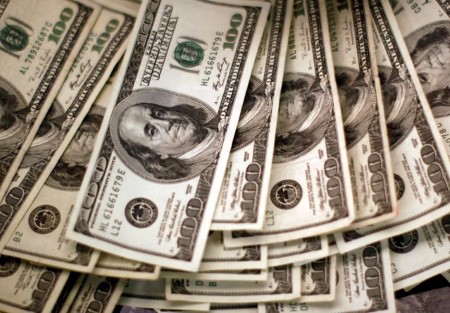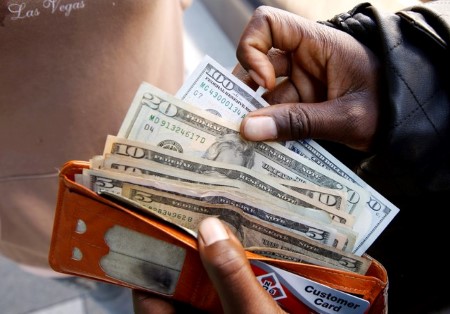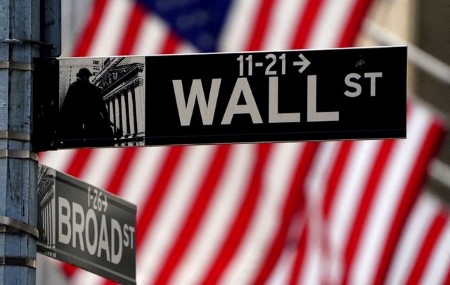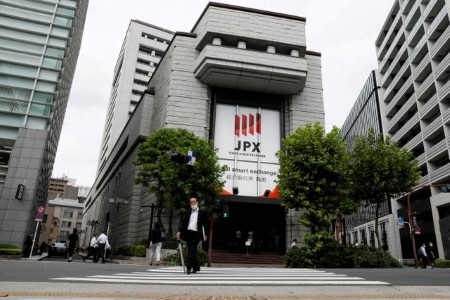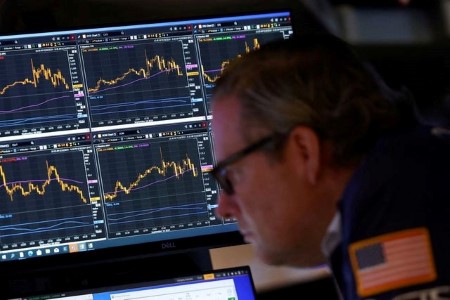Oct 24 (Reuters) – The Nasdaq and the S&P 500 gained on Thursday, driven by Tesla’s positive earnings forecast and a decline in Treasury yields from a three-month high, which buoyed market sentiment despite declines from some corporate results.
Shares of Tesla soared, with the EV-maker set to add more than USD 140 billion to its market capitalization, after it reported robust third-quarter profits and surprised investors with a prediction of 20% to 30% sales growth next year.
This helped take the Consumer Discretionary sector higher.
“It was a blowout from the perspective of Tesla,” said Charlie Ripley, senior investment strategist for Allianz Investment Management.
The benchmark S&P posted its first daily gain this week. However, sentiment was somewhat shaky. Most of the S&P sectors were in the red, as other earnings reports and pressure from lower, but still high Treasury yields weighed.
The yield on the benchmark 10-year Treasury note eased on the day, at 4.20%, after reaching a three-month high the day before. It went as high as 4.26% in Wednesday’s session, which saw all three major equity indexes lose ground.
“In the near term, the greatest influence we’ve seen in stocks in October has been the move higher in rates. From a 10-year Treasury below 4% to where we stand now has been relatively quickly,” said Bill Northey, senior investment director at US Bank Wealth Management.
Earnings announced before the bell include IBM, which lost after missing third-quarter revenue estimates, while Honeywell declined after it forecast annual sales below estimates, with both weighing on the blue-chip Dow.
According to preliminary data, the S&P 500 gained 11.84 points, or 0.20%, to end at 5,809.26 points, while the Nasdaq Composite gained 135.93 points, or 0.76%, to 18,415.35. The Dow Jones Industrial Average fell 145.56 points, or 0.34%, to 42,369.39.
Materials dropped, dragged down by Newmont as higher costs and weaker Nevada output saw it miss profit estimates.
Boeing also lost after factory workers voted on Wednesday to reject a contract offer and continue a more than five-week-long strike.
Stocks have eased from record levels over the past few sessions due to a reassessment of bets on the Federal Reserve’s rate cuts, rising Treasury yields, corporate earnings and uncertainty surrounding the upcoming US election.
The pullback, however, was to be expected, Dennis Dick, trader at Triple D Trading said. “The story is still in tech, and that story is not going away, I would still say dips in tech need to be bought.”
Southwest Airlines lost after earnings and after the company reached an agreement with activist investor Elliott Investment Management.
On a brighter note, UPS added after the parcel service provider reported a rise in third-quarter profit, on rebounding volumes and cost cuts.
Of the 159 companies in the S&P 500 that have reported results this earnings season, 78.6% have beaten analyst expectations, according to data compiled by LSEG.
On the economic front, S&P Global’s flash PMI data showed U.S. business activity increased in October, amid strong demand. Weekly jobless claims also fell unexpectedly for the week ended Oct. 19.
(Reporting by Lisa Mattackal and Purvi Agarwal in Bengaluru; Editing by Saumyadeb Chakrabarty, Pooja Desai and Aurora Ellis)







 DOWNLOAD
DOWNLOAD








